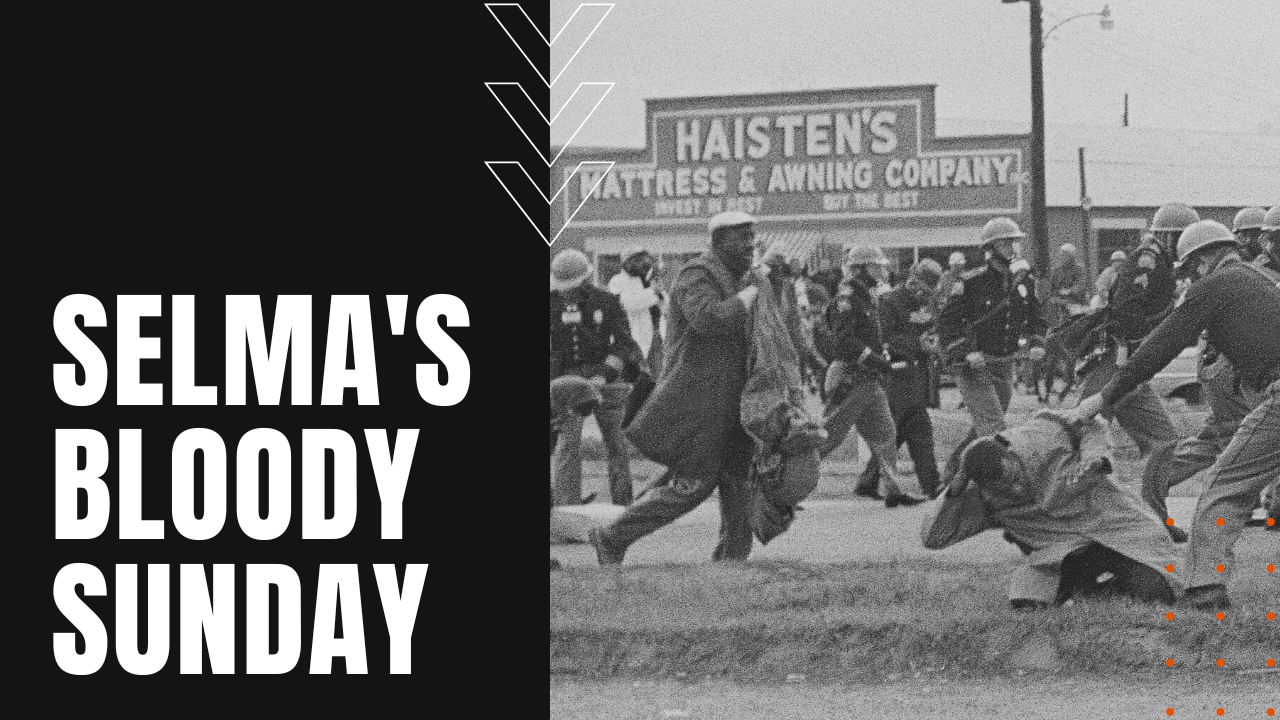Selma’s Bloody Sunday

After the passage of the Civil Rights Act of 1964—nearly a century after the abolition of slavery in America—civil rights activist focused their attention on Dallas County Alabama, where more than half the population was black, yet less than 2% of black residents were registered to vote.
March to Montgomery
On Sunday March 7th, activist John Lewis of the Student Nonviolent Coordinating Committee and Hosea Williams of the Southern Christian Leadership Council led some 600 protesters from the Brown Chapel AME Church in Selma on a planned 54-mile march to Alabama’s capital city of Montgomery, in an attempt to meet directly with Alabama Governor George Wallace, in a high-profile appeal for African American voting rights.
What Happened on Bloody Sunday?
Walking through Selma unimpeded, when the protesters reached the Edmund Pettus Bridge—named after a Confederate general and reputed grand dragon of the Alabama Ku Klux Klan—the marchers were stopped by a wall of state police, wearing riot gear and gas masks, as they slapped their billy clubs against their hands in open anticipation, while spectators waved Confederate flags with an equal sense of impending violence.
“It would be detrimental to your safety to continue this march,” Major John Cloud called out through a bullhorn. “This is an unlawful assembly. You have to disperse, you are ordered to disperse. Go home or go to your church.”
Instead, when the marchers failed to turn around, the troopers advanced like a phalanx of hate, brutally assaulting the protesters with clubs, bullwhips and rubber tubing wrapped in barbed wire, all in front of news cameras who captured the violence amid an uproar of cheers from reveling white bystanders.
Although ultimately forced back, in the spirit of nonviolent protest advocated by Martin Luther King, Jr. and Mahatma Gandhi before him, the marchers refused to fight back.
Racial Outrage Sweeps Nation
Hours later, when ABC news anchor Frank Reynolds interrupted the network’s star-studded premiere of the movie “Judgement at Nuremberg,” nearly 50 million Americans witnessed the brutal savagery of what would become known as Bloody Sunday.
Outrage swept a slowly-awakening nation, leading to sit-ins and demonstrations of white solidarity, making Selma’s Bloody Sunday, a turning point moment in a nations slow embrace of equal rights.
